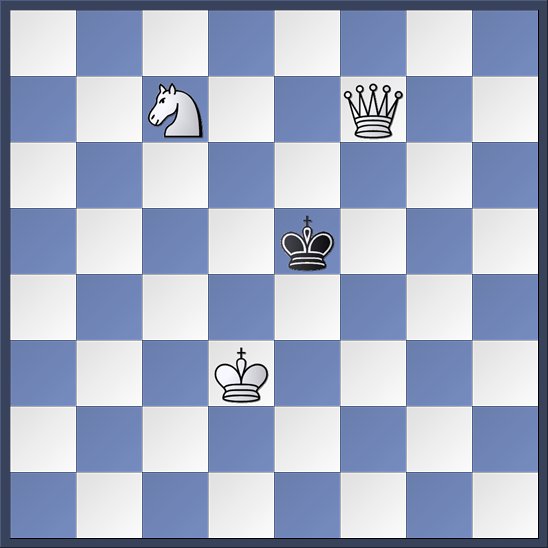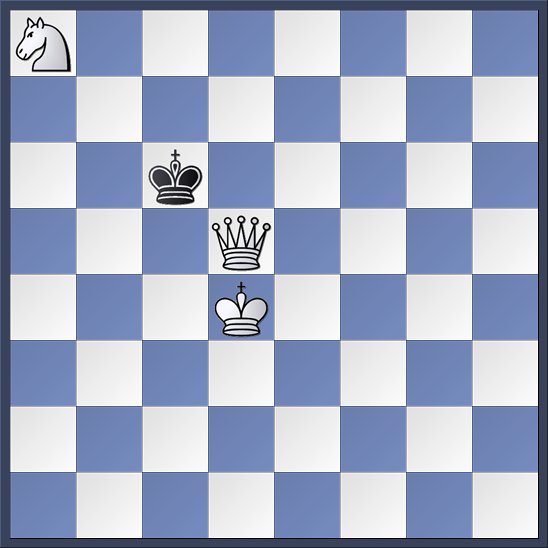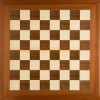Some chess problems are the equivalent of a big, Thanksgiving dinner. They have numerous variations and complex strategy. And that's fine, if a big dinner is what you want.
Sometimes, though, you just want a pleasant little amuse bouche. And that's what we have today. The problem below was composed by William Shinkman, one of the finest chess composers of the nineteenth century. It is white to move and mate in three.

Remember that white is moving up the board and black is moving down the board. Vertical files are labeled from left to right as a--h, while horizontal ranks are numbered 1--8 from bottom to top. So, the white king is currently on d3, while the black king is on e5.
This problem has just a single, forced variation. It's sole attraction is its surprising key move. But what a key move it is! White's only way of achieving his goal is with 1. Na8!:

There follows 1. ... Kd6 2. Kd4 Kc6 3. Qd5 mate:

If white opens anything else, black will be able to hold out for more than three moves.
And that's it! Hope you enjoyed it.
Incidentally, since I am always happy to lay some chess problem jargon on you, let me mention that chess composers always endeavor to express their ideas with fewest number of pieces possible. Problems using no more than twelve units are referred to as Merediths, in honor of a composer of that name. Problems with no more than seven pieces are said to be miniatures. And a problem like this week's entry, with no more than four units? That's a minimanner!
Sunday Chess Problem will be taking next week off, since I will be on the road! See you in two weeks.

reduction deduction..... Whinneyeth the horse: "What's so grim about the rim?" (smile)
Heh! I added some problem jargon at the end. Will you be in Parsippany next week?
I'm thinking probably the Sunday. You figure to be playing behind the ropes by then?
I admit to not being much of a chess player, but I still get a kick out of these. I was going back and forth with forced checks, but I couldn't get it in three. I never anticipated that knight move; super cool problem.